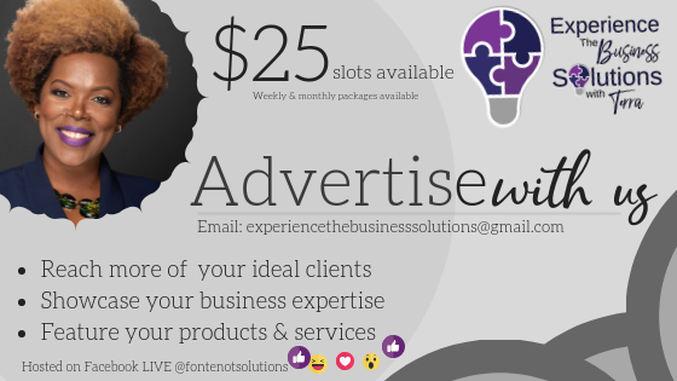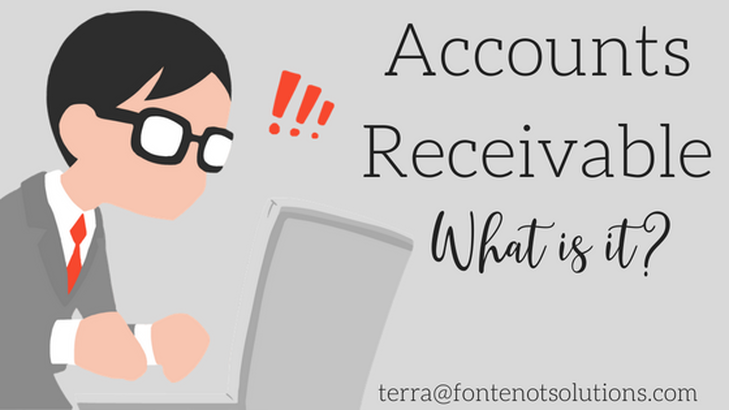|
As a business owner, have you ever felt left out of a conversation when others start to talk about their financial statement reports? When you start to hear words such as, P&L, profit and loss, statement of earnings or income statement --- the conversation may start to feel a bit awkward and overwhelming. That’s why we’re going to dive into how to understand more these statements. Understanding the income statement is essential to business owners and investors as it provides an overview of the profitability and future growth of your business. All business owners should see the income statement as a simple and straight forward report on a business’s cash generating ability. It is a scoreboard on the financial performance of your business that reflects when sales are made and expenses are incurred. The official definition says an income statement is: A financial statement generated monthly and/or annually that reports the earnings of a company by stating all relevant revenues (or gross income) and expenses in order to calculate net income. Also referred to as a profit and lost statement. The income statement is one of the five financial statements issued by a business. It reports the amount a corporation has earned during the period between two balance sheet dates. Here are 3 things you should know about an income statement: Income Statements come with Accounting Jargon One thing that can make entrepreneurs shy away from financial statement conversations is the jargon used. The jargon can make it seem more complex than it really is. For example, the term “sales” or “income” might be used instead of revenue. “Expenses” and “costs” are also used interchangeably. “Profit” is sometimes called “net income. Income Statements cover a period of time The income statement reveals how much money your business made over a period of time. Most often, the statement will reflect the performance over a month, a quarter or a year. For example, you might hear the words, year to date, or see “Y-T-D December 31”, indicating the period for Jan 1 to Dec 31. Income Statement follows a formula Every income statement, no matter how complex, follows a very simple formula. Revenue – Expenses = Profit For the period specified on the income statement, it will show the revenue the business earned, the expenses it incurred and the profit it made. If you want to understand how your business operations flows, the income statement can help give you a better picture of what makes your company profitable and where the losses are coming from.
12 Comments
Acquiring new customers is expensive and time-consuming. As a matter of fact, research shows that attracting new customers is 5X more expensive than keeping your existing customers. One of the most effective ways to increase your revenue is to invest more time with your existing customers. In the early stages of building your business, you use marketing to attract new customers. Once you land a steady flow of customers, your work has just begun. As a small business owner, you need to keep customers coming back. This is why marketing to existing customers is essential for your small business. Don’t let customer relationships fizzle out after the first sale. We have identified four methods you can use to invest more into your existing customers and to help keep them coming back. Tip 1: Stay in Contact Most of the time, your customers are not at your business. It’s important to stay visible by building brand awareness and marketing when you customers are not around. Tip 2: Address customer needs When you operate as a small business, you have an advantage over the larger corporations by offering a personal experience. What problems can your business solve for existing customers? Find out what the customer expects as soon as possible. Ask open-ended questions during your earliest conversations and listen to understand customer perception. Open-ended questions are those that require something more than just a simple "yes" or "no" in response. Tip 3: Collect data Data is gold when it comes to marketing to existing customers. You can use data to personalize marketing strategies for current customers. Find out your customers’ opinions by collecting feedback. For example, you could send a follow up email to a customer to ask if they are satisfied with your product or service. Have a place where customers can submit feedback. Also, set up a process to let customers know how you fill use feedback. Tip 4: Add Complementary Services to Existing Products Adding complimentary services or products may help you gain new clients, as well as maintain existing ones. Review the products of your competitors for ideas. Tip 5: Set up a loyalty program A loyalty program rewards existing customers for returning to your business. Creating a loyalty program also connects customers to your business. A loyalty program rewards customers for buying from your business. Set up a loyalty program for your business to encourage customers to keep coming back. Since they draw current customers back to your business, loyalty programs increase your revenue while rewarding customers. These are just a few tips on how to get more revenue from your existing customers. By implementing these simple tips, you will soon see opportunities you can use to develop or enhance your customer service policies and procedures. The best part about reflecting on your existing processes, is that your customers will benefit and feel that they are appreciated. Make this a focus of your marketing efforts and you will soon see the rewards come back in the form of increased referrals and increased sales. Cash doesn’t always flow how you need it to. It can start from customers who pay late to suppliers who have suffered some kind of setback. Building a cushion in your bank account isn't a complicated concept, instead of having just enough to pay bills and staff it is time to have a larger amount in the account. An amount that will not only allow for timely payments of monthly billings but enough to transfer into savings. Maintaining a smooth cash flow requires juggling many aspects of the business such as staying on top of “pending cash”, also known as accounts receivable, to -
Cash flow is the life of an organization, it’s a means to pay salaries, buy supplies and make stock investments. As the statistics have shown, owners who cannot efficiently manage their business cash flow are almost certain to fail. To improve cash flow and sustain growth it will be important to build a cash cushion. Having cash reserves enables companies to cope with a business disruption, deal with seasonality, and manage slow-paying customers. It allows a business to take advantage of new opportunities should they arise, and plan for future growth by having investment capital available. Here are just a few tips on how to business owners can boost their cash flow:
The efforts to implement meaningful changes within the business will be a combination of lessons learned. Building and keeping an adequate accumulation of cash provides maximum opportunity and flexibility to any business. Fontenot & Associates Solutions, LLC recommends identifying the method or strategies which work for your business culture. Building a stable long-term business means having sufficient liquidity and a developed and executed form of policy and procedures with clarity defined goals. It goes without saying that working with numbers and understanding how to interpret them, is a key part to managing a business. When you sell a product or service and generate a dollar of revenue, that economic exchange is captured through either the receipt of cash or through selling “on account”. When you sell “on account”, you create Accounts Receivable which is revenue earned, but not yet collected in cash. If you think about it, you have actually used Accounts Receivable your whole life. If you’ve ever earned a paycheck, you’ve used accounts receivable: just think, you performed work for your employer and you were paid, most likely, weekly or twice a month. You have performed work for your employer and weekly or twice a month, you are waiting to be paid for those services performed. When in business, at a high-level Accounts Receivable is important because it affects your cash flow. It matters because it is always important to keep inflow greater than you outflow, but Accounts Receivable is sort of part a no man’s land between inflow and outflow. This is why, in the beginning of starting a business and definitely before making sales “on account”, the terms of repayment need to be outlined and explained to your customers. The typical payment cycle for goods or services ranges 30 to 90 days. Accounts Receivable should be best managed on a consistent and routine basis. Regardless of your software or system, a process should be developed and implemented to ensure timely payments is the business overall expectation. This expectation should be known not only by customers but your support team as well. Inconsistent and spotty attention to the task can starve a businesses’ growth, while a steady and smooth process results in a business foundation capable of achieving all of its goals. Has this aspect of your business become overwhelming? Would you like to develop a new Accounts Receivable policy? Schedule a free consultation with us. Acquiring new customers is expensive and time-consuming. As a matter of fact, research shows that attracting new customers is 5X more expensive than keeping your existing customers. One of the most effective ways to increase your revenue is to invest more time with your existing customers.
In the early stages of building your business, you use marketing to attract new customers. Once you land a steady flow of customers, your work has just begun. As a small business owner, you need to keep customers coming back. This is why marketing to existing customers is essential for your small business. Don’t let customer relationships fizzle out after the first sale. We have identified four methods you can use to invest more into your existing customers and to help keep them coming back. Tip 1: Stay in Contact Most of the time, your customers are not at your business. It’s important to stay visible by building brand awareness and marketing when you customers are not around. Tip 2: Address customer needs When you operate as a small business, you have an advantage over the larger corporations by offering a personal experience. What problems can your business solve for existing customers? Find out what the customer expects as soon as possible. Ask open-ended questions during your earliest conversations and listen to understand customer perception. Open-ended questions are those that require something more than just a simple "yes" or "no" in response. Tip 3: Collect data Data is gold when it comes to marketing to existing customers. You can use data to personalize marketing strategies for current customers. Find out your customers’ opinions by collecting feedback. For example, you could send a follow up email to a customer to ask if they are satisfied with your product or service. Have a place where customers can submit feedback. Also, set up a process to let customers know how you fill use feedback. Tip 4: Set up a loyalty program A loyalty program rewards existing customers for returning to your business. Creating a loyalty program also connects customers to your business. A loyalty program rewards customers for buying from your business. Set up a loyalty program for your business to encourage customers to keep coming back. Since they draw current customers back to your business, loyalty programs increase your revenue while rewarding customers. These are just a few tips on how to get more revenue from your existing customers. By implementing these simple tips, you will soon see opportunities to develop or enhance your customer service policies and procedures. The best part about the process is that your customers will benefit and feel that they are appreciated. If you are in business, you probably hate sending out 1099 Forms. In fact, you are probably thinking - no one likes 1099s except the IRS. That may possibly be true but so is the fact that if not reported timely and accurately it can completely blow your business budget.
The IRS matches nearly all 1099s and W-2s (those are the wage report forms from your employer) against your 1040. The penalties for not doing so can vary from $30 to $100 per form ($1.5 million for the year), depending on how long past the deadline the company issues the form. If a business intentionally disregards the requirement to provide a correct payee statement, it is subject to a minimum penalty of $250 per statement, with no maximum. The 1099 penalty also applies if you file on paper when you were required to file electronically on your 1099 paper forms are not machine readable. Additionally, penalties may apply if you fail to report or include a correct TIN (tax identification number). The amount of the 1099 deadline is based on when you file the correct information return. Here are 6 things you should know about 1099s:
There’s no perfect solution, but one thing is clear. If you receive a Form 1099, you can’t just ignore it, because the IRS won’t. Developing a procedure for your company can not only save your business time in ensuring accurate employee data is available but save you money from penalties and interest. You can schedule your free consultation with us now. Can you recall the last time you encountered a brain freeze? The thought of Accounting may cause brain freezes for new entrepreneurs but the basics I’m about to share with you will ease the pressure of what Accounting means to your business when getting started.
Here are five ways to understanding Accounting in your business: 1. The business structure must fit It is up to you to choose which kind of structure is best for you and your business, but the importance to the process is not to guess with your selection. This decision matters to the tax structure your business will be obligated to understand and to the amount of paperwork to complete. The most common forms of business are sole proprietorship, partnership, limited liability company (LLC) corporation and S corporation. Each form comes with different tax consequences, you will have to make your selection wisely and choose the structure that best matches your business needs. Below are some of the tax implications to the most common business tax structures:
2. Business activity needs a bank account The ability to maximize your business revenue starts with understanding what is required to be reported. The separation of business income and expenses from personal is by far one of the most important actions to take first. This can be accomplished with the setup of a new bank account exclusively for your business. Many banks offer an introductory period of free banking which could be a few months or longer but it is key to understand what that means for your business after the introductory period. Don’t feel obligated to open a bank account with your current bank, get the best deal and setup for you and your business. In order to open a business account, you’re required to have a business name, which may be a DBA or one of the common business structures formed and registered with your State. Do your research on bank requirement. 3. Budget with the funds you have As a new entrepreneur you may see a budget as a future goal or task for your business but that is far from the truth. You are certainly spending money when starting a new business thus why not understand how much you can truly afford to spend. The first three months of the business can be the most critical time frame to identify how much income is necessary to manage and maintain as well as how much you can afford to spend on business expenses. Allow your budget to be your weekly or monthly resource to understanding your business cash flow. 4. Track your expenses as they occur It’ s one thing to say you are in business and another to develop a habit of consistency to track your expenses. More often than not you may find yourself meeting and building relationships with new clients, traveling to a speaking engagement or replacing supplies with the use of your personal debit banking card or credit card. If you miss capturing these cost, not only will your business pay more tax than necessary but you also do not have a good record of how much your business is costing you. 5. Get paid for your services You are contracted to complete the work, now its time to get paid. Have a payment policy in place which screams “professional” to clients and helps ensure that you and your clients are on the same page right front he outset, says John Rampton, VP from Entrepreneur Magazine. You may also consider offering customers a discount for paying invoices early, can help you get paid more quickly too. For instance, if you usually policy is to have payments due in 30 days, offer a small discount such as two percent to customers who pay within 14 days. You don't have to build your business alone. Allow us to eliminate the brain freezes you or your management team encounter when it come to planning for financial stability and growth. Let's discuss a more efficient way to set your business financially apart! We are scheduling consultations now, email [email protected]. According to the Small Business Administration (SBA), “cash flow is the lifeblood of a business and critical in its growth.” The importance of cash flow begins before a business owner makes the decision to launch their business because it takes cash to manage the day to day operations. As a matter of fact, a prominent study by a U.S. Bank found that as many as 82 percent of startups and small businesses fail due to poor cash-flow management.
Although cash flow does seem to sometimes flow only one way – out of the business – it does flow both ways. Cash is coming in from customers or clients who are buying your products or services. Cash is going out of your business in the form of payments for liabilities, also known as your expenses. When starting a business, dealing with cash flow can be the most difficult. You have many expenses and money is going out faster than you can count it. And you may have no sales or customers who are paying you. Being cash flow positive means that you’re bringing in more money that you are spending, and your business is doing well. Being cash flow negative means you are spending more that you have coming in, and the survival of your business may be in trouble. You can take control of what happens next in your business by asking yourself the following three questions:
If you find yourself daydreaming about the answers to these two questions, then you may be taking your business on a rollercoaster ride. This could not only be frightening to you as a business owner but also to your management team or staff. One way to keep your cash flow situation under control is by tracking your cash flow results every month to determine if your management team is creating the type of cash flow your business needs. Start with making those small but yet impactful changes today. I don't know about you but this tax season seems to be moving at an accelerated pace. However, we don't want you to move too fast that you miscalculate your taxable income, incidentally under report your business income or miss an important tax deadline. Fontenot & Associates Solutions, LLC has identified five (5) avoidable, but yet common small business tax pitfalls to share with you as we look for ways to help minimize your business expenses. We prefer that you keep any extra dollars earned in your bank account. 1. Making Deduction Mistakes - One of the most common mistakes made by small business owners is, not keeping accurate records of their expenses. While some may see it as a tedious task, Fontenot & Associates Solutions, LLC would like you to see it as taking the initiative to avoid spending countless dollars on penalties to the IRS. 2. Charity Donation Pitfalls - Charity donations should not be your go to deduction when trying to reduce your taxable income. If you donate to charity, you will need to keep an accurate list of the items donated and its value. In addition, obtain a receipt from the location, which should be a reputable one. This will help to avoid a 25 percent penalty. 3. Inaccurate Tax Returns - If you made an error on your tax return that results in you owing more tax, the IRS can charge you a late payment penalty on the amount still owed. This could be a costly mistake for m any small business owners, especially since the penalty is 0.5 percent per month or partial month, to a maximum of 25 percent of the amount owed. A recommended solution to this tax pitfall is to review your business transactions at least quarterly for accuracy.
4. Failing to Making a Payment on Time - While some of these pitfalls may not be intentional, it does not stop the IRS from penalizing you and assessing a 0.5 to 1 percent penalty each month on an unpaid tax bill. 5. Civil Fraud Pitfalls - A huge pitfall a small business owner can make is to underreport income with fraudulent intent. Not reporting all of the income earned on your federal tax return, on purpose, can cost you not only huge penalties but also a charge for criminal tax fraud. The penalties fined can be as much as 75 percent of the amount you failed to report. This pitfall is not one to take lightly and is completely avoidable with the proper business processes in place. The solution to all of these pitfalls, starts with keeping accurate records. Small business owners may also consider hiring a professional to support them and/or their team. Remember, you are in business to build and grow. An audit has caused many small businesses to close their doors because of underreported income or high penalties for fraud - this does not have to be your business. We are here to support! When you know your winning, you can only get excited about whatever it is your doing. Right?! This is the kind of attitude I want replicated in all small business owners as they sit down and review their business finances. When making the decision to become a business owner, you have already indirectly accepted the additional roles and responsibilities that come with making sure your business is successful. Believe it or not, Accounting is a great place to build your positive habits and structure for managing your direct sells business. Owning a business, even a small one, adds a layer of complexity to the filing of your income tax return. If you are a direct sales consultant, yes -- you too are considered a business owner, the IRS calls you a Direct Seller. Your business structure is identified as a sole proprietor, a solo business owner, and one of the important elements to being a sole proprietor is ensuring that you understand your tax obligations.
As a sole proprietor, your personal and business income tax filings are filed together using IRS Form 1040 in addition to the Schedule C or C-EZ forms for reporting business income and expense. The direct seller is generally classified as an independent contractor by their company rather than as an employee. This classification means, once a direct seller has earned more than $600 he or she will receive a Form 1099-MISC. The form will report the gross income earned from the company, only. It is the direct seller who is responsible for keeping track of business expenses throughout the year, therefore ensuring for factual tax reporting. To file accurate tax returns let’s start with identifying some of the different sources of revenue for a Direct Seller, as recognized the IRS – those include,
You can find the complete listing on the IRS website. The tracking of income and expenses can start simply with maintaining an Microsoft Excel worksheet, also known as, the good ole faithful and the most commonly used method for tracking or by utilizing an app or software feature such as Evernote or Google notes. Remember, it is all about finding the tools which will bring the most convenience to you and your day to day business deliverables. Assuming you earned over $600 in a year through direct selling endeavors and received a Form 1099-MISC, here are a few tax tips to remember:
Another important key process to remember and implement in your business is the importance of separating your personal and business bank accounts. Yes, I kid you not, having two separate accounts can save your business, financially. It will help with providing supporting documentation in the event of an IRS audit plus it allows you to avoid the penalties of underreporting income to the IRS. Please feel free to contact me at [email protected], if you have questions or need support with creating business solutions that will help you build clarity and maintain success in an industry, such as direct sells, that takes grit and persistence. |
Archives
July 2022
Categories
All
AuthorMy mission is to offer the best accounting and operations solutions and tips for entrepreneurs and small to mid-size companies worldwide seeking to close their process gaps with actual solutions. |
We Work to Provide Unique Solutions"Our team of innovative professionals use their knowledge and experience to set your business and team of professionals up for success. Our extensive accounting and operations skills are a start and key tools to company growth, building team cohesiveness, establishing clear purpose and goals, and improving process inefficiencies. Our services are key to businesses of all sizes. We handle providing the detail framework to your business so that you may focus on building your business. |
Contact UsSTAY CONNECTEDNEWS & TIPS IN YOUR INBOX
|












 RSS Feed
RSS Feed